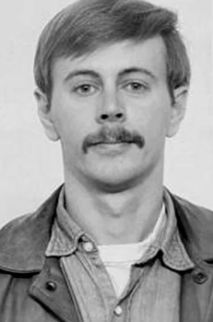Related Research Articles

The VHS is a standard for consumer-level analog video recording on tape cassettes, introduced in 1976 by the Victor Company of Japan (JVC). It was the dominant home video format throughout the tape media period in the late 1970s, 1980s, and 1990s.
The cassette culture refers to the practices associated with amateur production and distribution of music and sound art on compact cassette that emerged in the mid-1970s. The cassette was used by fine artists and poets for the independent distribution of new work. This article focuses on the independent music scene associated with the cassette that burgeoned internationally in the second half of the 1970s.

Digital Audio Tape is a signal recording and playback medium developed by Sony and introduced in 1987. In appearance it is similar to a Compact Cassette, using 3.81 mm / 0.15" magnetic tape enclosed in a protective shell, but is roughly half the size at 73 mm × 54 mm × 10.5 mm. The recording is digital rather than analog. DAT can record at sampling rates equal to, as well as higher and lower than a CD at 16 bits quantization. If a comparable digital source is copied without returning to the analogue domain, then the DAT will produce an exact clone, unlike other digital media such as Digital Compact Cassette or non-Hi-MD MiniDisc, both of which use a lossy data-reduction system.

The Evolution Control Committee is an experimental music band based in Columbus, Ohio. The ECC was founded by Mark Gunderson in Columbus in 1986. They create music that falls within the borders of the sound collage genre, typically using uncleared and illegal samples from various sources as a form of protest against copyright law. The ECC also produces numerous audio experiments that goes outside regular composition methods, including the disfiguring of compact discs in a live performance known as "CDestruction". They have produced a few video works as well, ranging from re-edited 50's corporate shorts to Teddy Ruxpin reciting the works of William S. Burroughs. Other activities include culture jamming.
The Beatles' bootleg recordings are recordings of performances by the Beatles that have attained some level of public circulation without being available as a legal release. The term most often refers to audio recordings, but also includes video performances. Starting with vinyl releases in the 1970s, through CD issues in the late 1980s, and continuing with digital downloads starting in the mid 1990s, the Beatles have been, and continue to be, among the most bootlegged artists.

An album is a collection of audio recordings issued on a medium such as compact disc (CD), vinyl (record), audio tape, or digital. Albums of recorded sound were developed in the early 20th century as individual 78 rpm recordss (78s) collected in a bound book resembling a photo album; this format evolved after 1948 into single vinyl long-playing (LP) records played at 33+1⁄3 rpm.

Maxell, Ltd., commonly known as Maxell, is a Japanese company that manufactures consumer electronics.

Crash, stylized as CRASH, is a magazine dedicated to the ZX Spectrum home computer, primarily focused on games. It was published from 1984 to 1991 by Newsfield Publications Ltd until their liquidation, and then until 1992 by Europress. It was relaunched as a quarterly A5 magazine in December 2020 with the backing of the original founders.

U-matic or 3⁄4-inch Type E Helical Scan or SMPTE E is an analogue recording videocassette format first shown by Sony in prototype in October 1969, and introduced to the market in September 1971. It was among the first video formats to contain the videotape inside a cassette, as opposed to the various reel-to-reel or open-reel formats of the time. The videotape is 3⁄4 in (19 mm) wide, so the format is often known as "three-quarter-inch" or simply "three-quarter", compared to open reel videotape formats in use, such as 1 in (25 mm) type C videotape and 2 in (51 mm) quadruplex videotape.

A bootleg recording is an audio or video recording of a performance not officially released by the artist or under other legal authority. Making and distributing such recordings is known as bootlegging. Recordings may be copied and traded among fans without financial exchange, but some bootleggers have sold recordings for profit, sometimes by adding professional-quality sound engineering and packaging to the raw material. Bootlegs usually consist of unreleased studio recordings, live performances or interviews without the quality control of official releases.

A demo is a song or group of songs typically recorded for limited circulation or for reference use, rather than for general public release. A demo is a way for a musician to approximate their ideas in a fixed format, such as cassette tape, compact disc, or digital audio files, and to thereby pass along those ideas to record labels, producers, or other artists.

A disk magazine, colloquially known as a diskmag or diskzine, is a magazine that is distributed in electronic form to be read using computers. These had some popularity in the 1980s and 1990s as periodicals distributed on floppy disk, hence their name. The rise of the Internet in the late 1990s caused them to be superseded almost entirely by online publications, which are sometimes still called "diskmags" despite the lack of physical disks.

Sound recording and reproduction is the electrical, mechanical, electronic, or digital inscription and re-creation of sound waves, such as spoken voice, singing, instrumental music, or sound effects. The two main classes of sound recording technology are analog recording and digital recording.

The Tape-beatles are a multi-media group that formed in Iowa City in December 1986. Its members have included Lloyd Dunn, John Heck, Ralph Johnson, Paul Neff, and Linda Morgan Brown. Beginning with analog tape recorders, and later expanding to include digital technology and film media, the group has used collage techniques to create works that challenge the notion of intellectual property. Their works make extensive use of materials appropriated from various sources through a process they call "Plagiarism®". The Tape-beatles' body of work consists mainly of noise music and audio art recordings, expanded and performed cinema performances, videos, printed publications, as well as works in other media. They produce and release work under an umbrella organization called Public Works Productions.
Sharon Ann Cheslow is an American musician, composer, artist, writer, photographer, educator, and archivist. In 1981, she formed Chalk Circle, Washington, D.C.'s first all-female punk band. She has since become an accomplished artist who works between different mediums, mostly sound-based.

Multitrack recording of sound is the process in which sound and other electro-acoustic signals are captured on a recording medium such as magnetic tape, which is divided into two or more audio tracks that run parallel with each other. Because they are carried on the same medium, the tracks stay in perfect synchronization, while allowing multiple sound sources to be recorded at different times.

A mixtape is a compilation of music, typically from multiple sources, recorded onto a medium. With origins in the 1980s, the term normally describes a homemade compilation of music onto a cassette tape, CD, or digital playlist. The songs are either ordered sequentially or made into a continuous programme by beatmatching the songs and creating seamless transitions at their beginnings and endings with fades or abrupt edits. Essayist Geoffrey O'Brien described this definition of the mixtape as "perhaps the most widely practiced American art form".
Plunderphonics is a music genre in which tracks are constructed by sampling recognizable musical works. The term was coined by composer John Oswald in 1985 in his essay "Plunderphonics, or Audio Piracy as a Compositional Prerogative", and eventually explicitly defined in the liner notes of his Grayfolded album. Plunderphonics is a form of sound collage. Oswald has described it as a referential and self-conscious practice which interrogates notions of originality and identity.

David Randolph Hurles was an American gay pornographer, whose one-man company, run from a private mailbox, was called Old Reliable Tape and Picture Company. His work, produced primarily in the 1970s and 1980s, falls into three categories: photographs, audio tapes, and videotapes. Hurles' models were typically ex-convicts, hustlers, drifters, and ne'er do wells. Hurles died on April 12, 2023, at the age of 78.
Rik Rue is an Australian experimental musician, and sound artist, known for his audio collages in recordings and live performance.
References
- ↑ Plunkett, Daniel. "An Interview with Lloyd Dunn," ND [Austin, Tex.] no. 13, 1991
- ↑ Billé, Philippe. "Refusing Art," Lund Art Press [Lund, Sweden] vol. 1, no. 4, 1990.
- ↑ Carr, C. "Life Underground: Tunneling into the ʼZine/Cassette Network," Village Voice [New York, N.Y.], January 9, 1990
- ↑ Phillpot, Clive. "Critical Fictions: Clive Phillpot on the Changing of the Garde," Artforum [New York, N.Y.], October, 1990
- ↑ Blackburn, Philip. "Meet the Tape-beatles." Artpaper [Minneapolis, Minn.], vol. 12 no. 1, September 1992.
- ↑ Anon. Internet Movie Database listing